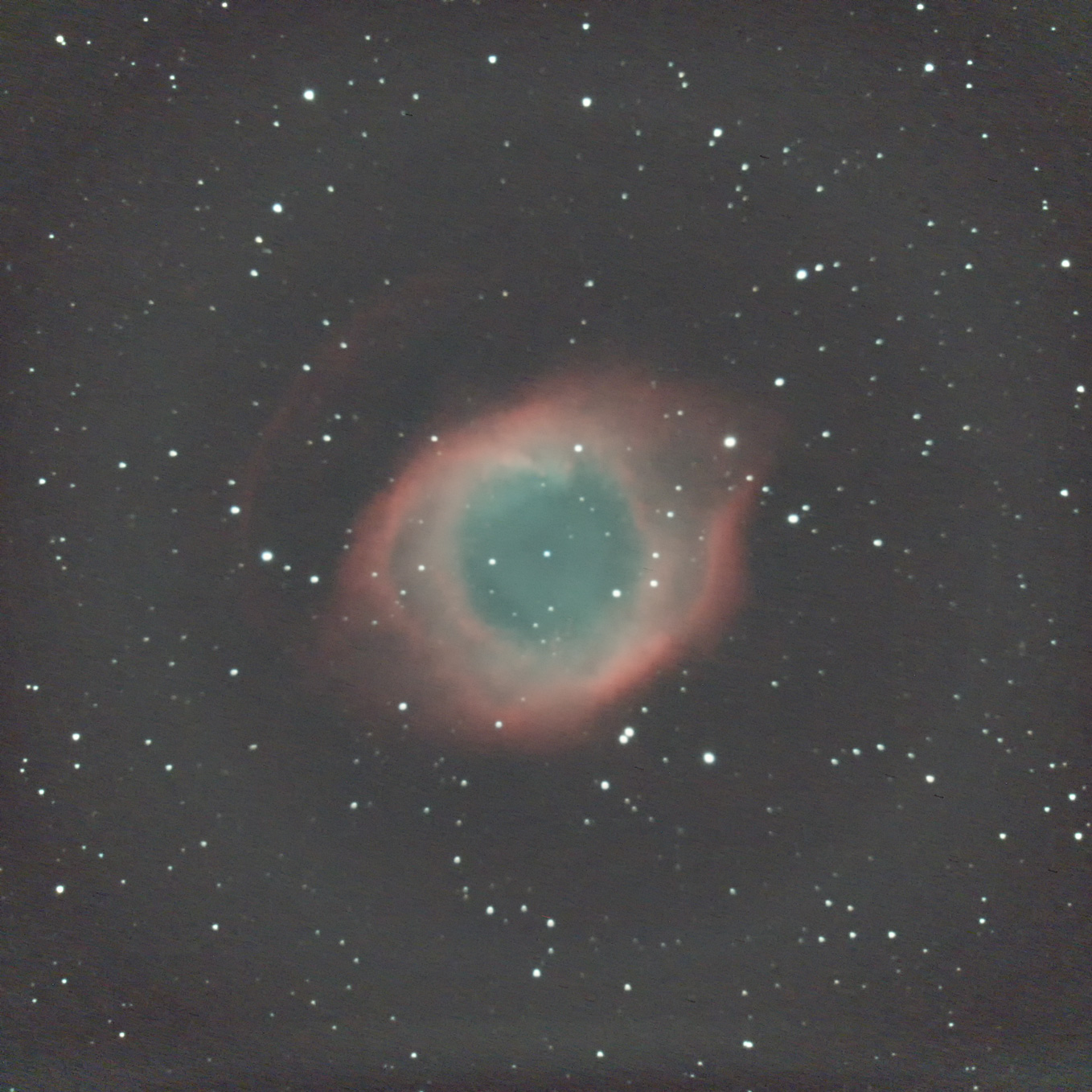| NGC7293 / Planetary Nebula, type IV+III |
|---|
| R.A. | 22h 29m 36.0s (2000.0) |
|---|
| Dec. | -20° 48' 00" (2000.0) |
|---|
| Apparent Size | 15.0×12.5' |
|---|
| Real Size | 2.53×1.97 light yrs. |
|---|
| Magnitude | 7.0 |
|---|
| Distance | 580 light yrs. |
|---|
At the moderate latitude in the autumn's south sky, you can see the largest planetary nebula of NGC7293 in the skies only with binoculars.
Its shape has given the name of "The Helix Nebula", it's resemble the DNA double helix on photographs.
The nebula is located about 10 degrees NW of Fomalhaut, alpha PsA, it's easy to use the star as a mark to search the nebula rather than stars in Aquarius.
The nebula has an extraordinary vast size, about same diameter with the half of that of full moon,
and is unexpectedly faint, it's fairly difficult to see in naked eyes.
The nebula has formed by a central white dwarf discharged the gaseous matter, and is expanding outward at the rate of about 25km (16 miles) per second.
It's said that the sun should be destined to follow the same way with a dwarf in this nebula about 5 billion years later.
⇒ Display the spectral profile of NGC7293 (in new window)
|

